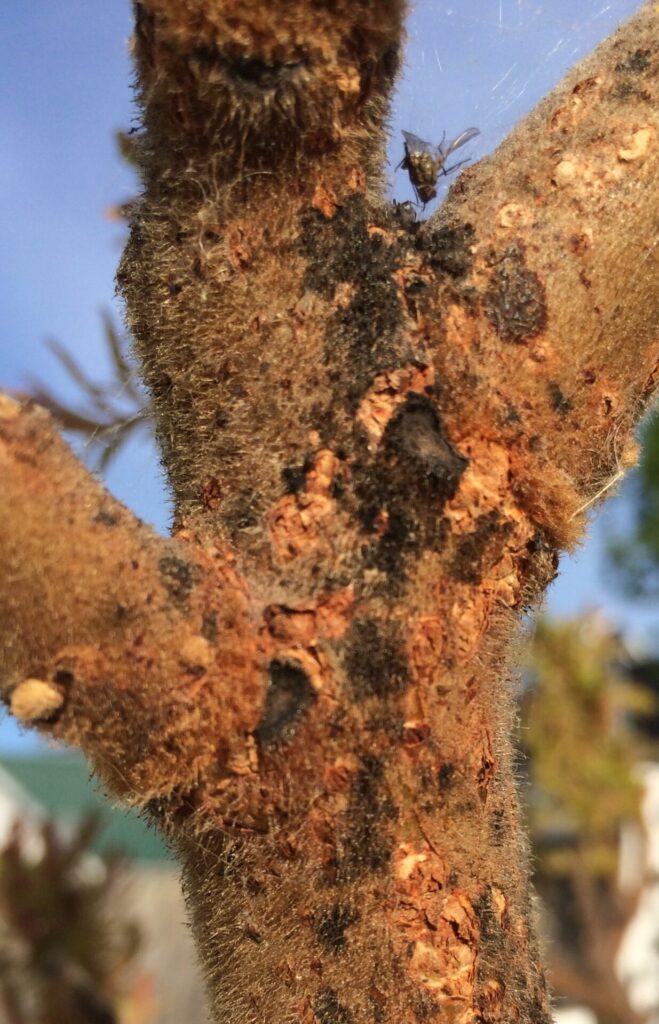
Hello,
I have two Rhus typhina Tiger Eyes. The leaves were fine last year and they seem unaffected so far however the bark looks dreadful with large areas covered in black and splitting in some places. The bark at the base has yellow ooze turning to black in some spots.
Last spring I bought a number of hollyhocks at a church fundraiser which I ripped out in August as they were completely infested with a rust.
In the fall I discovered black spots surrounded with red edges on the stems of all the rose bushes. These I cut out as much as possible.
There was no aphid population last year noticeable and have not seen one this year although the roses did have caterpillars.
sumacs: zone 5b/ sun head and shade base due to fence /loam/drier side /companion plants violets, coral bells, hostas, ferns, clematis
Are any of this incidents related?
Can the sumacs be saved or do they need to be pulled? This disease seems to have infected almost all parts of the bark. Do you know what disease this is and what I an do about it?
Thank you for your help with this.
We are very sorry to see that your Tiger Eyes sumac trees are suffering from a severe fungal infection.
First, to answer the easier question: the fungus infecting your sumac are unlikely to be causally related to the two fungal infections you mentioned. Hollyhock rust, caused by the fungus Puccinia malvacearum, affects only plants in the mallow (Malvaceae) family. Similarly, the rose black spot is caused by Diplocarpon rosae, which infects plants in the rose (Rosaceae) family. Rhus typhina belongs to the cashew (Anacardiaceae) family.
Now onto the more difficult part: identifying that fungus, and how to treat it. We believe what you are seeing is sumac shoot blight; also known as apple canker or cane blight, this is caused by the fungus Botryosphaeria ribis. Symptoms on stems include oval/circular cankers, bark discoloration, and gummosis/resinosis. Here is an excellent information sheet on Botryosphaeria canker from the Virginia Cooperative Extension that will help you confirm (or disprove!) our diagnosis (see especially photos on page 3) and learn more about it. There is no known cure for Botryosphaeria infection. Given that the infection seems quite severe in your case, your best bet may be to remove the sumac trees and replace them with species more suitable to your site.

